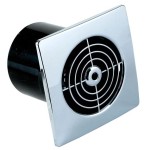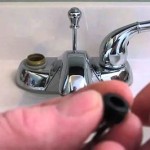How to Get Rid of Tiny Brown Bugs in Your Bathroom
Finding small, brown bugs in the bathroom can be an unsettling experience. Identifying these pests accurately is the first step in determining the most effective removal strategy. The term "tiny brown bugs" encompasses a variety of insects that thrive in the humid environment often found in bathrooms. Common culprits include drain flies, drugstore beetles, cockroaches (especially German cockroaches in their nymph stage), and booklice. Each of these insects requires a different approach to eradication, so proper identification is paramount.
Drain flies, also known as moth flies or sewer flies, are small, fuzzy insects that are typically dark brown or black. They are often seen hovering near drains, sinks, and toilets. They breed in standing water and organic matter that accumulates in drains. Drugstore beetles are small, cylindrical brown insects that feed on a variety of dry goods, including cereals, flour, and spices. While they may not breed directly in the bathroom, they can be attracted to the moist environment. Young cockroaches, especially German cockroach nymphs, are light to dark brown and significantly smaller than adult cockroaches. They are attracted to moisture and food sources, making bathrooms an attractive habitat. Booklice, also known as psocids, are tiny, soft-bodied insects that are typically white or pale brown. They feed on mold and mildew, thriving in damp environments such as bathrooms.
Before initiating any treatment, a thorough inspection of the bathroom is essential. This inspection should focus on areas where moisture and organic matter accumulate. Check under sinks, around toilets, inside drains, and along baseboards. Look for signs of insect activity, such as droppings, shed skins, or actual bugs. Determining the areas of highest concentration will help target treatment efforts more effectively. This also involves identifying any potential entry points, such as cracks in walls or gaps around pipes. Addressing these entry points can prevent future infestations.
Effective removal of tiny brown bugs requires a multi-pronged approach that addresses both the existing infestation and the underlying conditions that attract these pests. This includes cleaning, sanitation, and targeted insecticide treatments, if necessary. The specific techniques employed will depend on the type of insect identified and the severity of the infestation.
Identifying the Specific Type of Bug
The initial step in effective pest control is accurate identification. Close examination of the bugs is crucial. Consider their size, shape, color, and behavior. For instance, drain flies have a distinctive moth-like appearance and flutter weakly. Drugstore beetles have a cylindrical shape. Cockroach nymphs are flattened and move quickly. Booklice are very small and often found on moldy surfaces. Using a magnifying glass can aid in this identification process. Photographing the bugs and comparing them to online resources or consulting with a pest control professional can also be helpful. Misidentification can lead to ineffective treatments and prolonged infestation.
Once the bug type is suspected, research its habits, food sources, and preferred habitats. This information will guide the sanitation and treatment strategies. For example, knowing that drain flies breed in organic matter in drains will necessitate cleaning the drains. Understanding that drugstore beetles feed on dry goods will require inspecting and discarding infested food items. Knowing that cockroach nymphs prefer dark, moist places will prompt thorough cleaning under sinks and behind toilets.
If unsure about the identification, collecting a sample of the bugs can be very helpful. Place the sample in a sealed container and consult with a local pest control expert. They can accurately identify the insect and recommend the most effective treatment options. This is particularly important if the infestation is severe or if you are concerned about the potential health risks associated with certain pests, such as cockroaches.
Implementing Sanitation and Cleaning Measures
Sanitation is a cornerstone of pest control, especially in the humid environment of a bathroom. Removing the food sources and eliminating breeding areas will significantly reduce the bug population. Start by thoroughly cleaning the bathroom. This includes scrubbing sinks, toilets, showers, and floors. Pay particular attention to areas where moisture tends to accumulate, such as around drains, under sinks, and along baseboards.
Cleaning drains is essential for eliminating drain flies and preventing their breeding. Pouring boiling water down the drain can help dislodge organic matter. Using a drain snake or a stiff brush can further remove debris. Alternatively, enzymatic drain cleaners can break down organic matter without harming pipes. These cleaners are specifically designed to target the food sources of drain flies and are a more environmentally friendly option than harsh chemical drain cleaners. Regular drain maintenance is crucial in preventing future infestations.
Addressing leaks and excess moisture is equally important. Repair leaky faucets and pipes promptly to eliminate standing water. Ensure proper ventilation in the bathroom by using the exhaust fan during and after showers. This helps reduce humidity levels, making the bathroom less attractive to pests that thrive in damp environments. Consider using a dehumidifier if humidity is consistently high. Regularly wiping down surfaces to remove moisture can also help prevent mold and mildew growth, which attracts booklice.
Proper storage of toiletries and cleaning supplies is also necessary. Store items in airtight containers to prevent them from becoming food sources for pests like drugstore beetles. Regularly clean and disinfect trash cans to eliminate odors and food residue that can attract pests. Remove any clutter from the bathroom to eliminate hiding places for bugs. By maintaining a clean and dry bathroom environment, you can significantly reduce the likelihood of pest infestations.
Utilizing Targeted Treatment Options
Once sanitation measures have been implemented, targeted treatment options can be used to eliminate the remaining bugs. The type of treatment will depend on the specific insect identified. It is important to use insecticides safely and responsibly, following the manufacturer's instructions carefully. Consider non-chemical methods first, especially if you have children or pets.
For drain flies, a simple trap can be created using a mixture of apple cider vinegar and dish soap. Place a small bowl of this mixture near the drain. The vinegar attracts the flies, and the soap breaks the surface tension of the liquid, causing them to drown. Alternatively, sticky traps can be placed near drains and other areas where drain flies are observed. These traps capture the flies as they fly around. Regular replacement of the traps is necessary for continued effectiveness.
If drugstore beetles are present, inspect all dry goods in the bathroom and adjacent areas, such as the kitchen and pantry. Discard any infested items in sealed plastic bags to prevent the beetles from spreading. Clean and vacuum shelves and cabinets to remove any remaining beetles or larvae. Pheromone traps specifically designed for drugstore beetles can be used to attract and capture adult beetles. These traps are a non-toxic way to monitor and control populations.
For cockroach nymphs, a combination of baits and sprays may be necessary. Cockroach baits contain insecticides that attract cockroaches and kill them when they ingest the bait. Place baits in areas where cockroaches are commonly seen, such as under sinks and behind toilets. Insecticide sprays can be used to treat cracks and crevices where cockroaches may hide. Choose sprays that are specifically labeled for cockroach control and follow the manufacturer's instructions carefully. Boric acid powder can also be used as a long-lasting insecticide. Sprinkle a thin layer of boric acid in areas where cockroaches are likely to travel, such as behind appliances and along baseboards.
To address booklice, reducing humidity levels is crucial. Use a dehumidifier to maintain a relative humidity level below 50%. Improve ventilation in the bathroom by using the exhaust fan. Thoroughly clean and disinfect moldy surfaces. Insecticide sprays specifically labeled for use against booklice can be applied to affected areas. However, ensure the area is well-ventilated and avoid direct contact with the spray. Diatomaceous earth, a natural powder made from fossilized diatoms, can also be used to control booklice. Sprinkle a thin layer of diatomaceous earth in areas where booklice are present. The powder dehydrates the insects, causing them to die.
When using any insecticide, it is crucial to prioritize safety. Wear appropriate protective gear, such as gloves and a mask. Avoid spraying near food preparation areas or on surfaces that come into contact with food. Keep children and pets away from treated areas until the insecticide has dried. If the infestation is severe or if you are uncomfortable using insecticides, consider hiring a professional pest control service. They have the expertise and equipment to effectively eliminate pests and prevent future infestations.

4 Tiny Bugs In Shower Grout And Bathroom How To Get Rid Of Them

Identify Tiny Bugs In Bathroom And Get Rid Of Them For Good

What Are These Tiny Brown Crawling Bugs In My Bathroom Apartment Lease Phoenix Area Arizona Az City Data Forum

Bathroom Bugs Identification Guide How To Get Rid Of Each Type A Z Animals

Bathroom Bugs Identification Guide How To Get Rid Of Each Type A Z Animals

Identify Tiny Bugs In Bathroom And Get Rid Of Them For Good

12 Examples Of Brown Bugs In A House An Identification Guide

Small Tiny Brown Bugs In My House What Are They School Of

Get Rid Of Bathroom Bugs Professional Pest Control Services Northern Aai

Tiny Bugs In Your Bathroom Identification Control Worst Room
Related Posts






